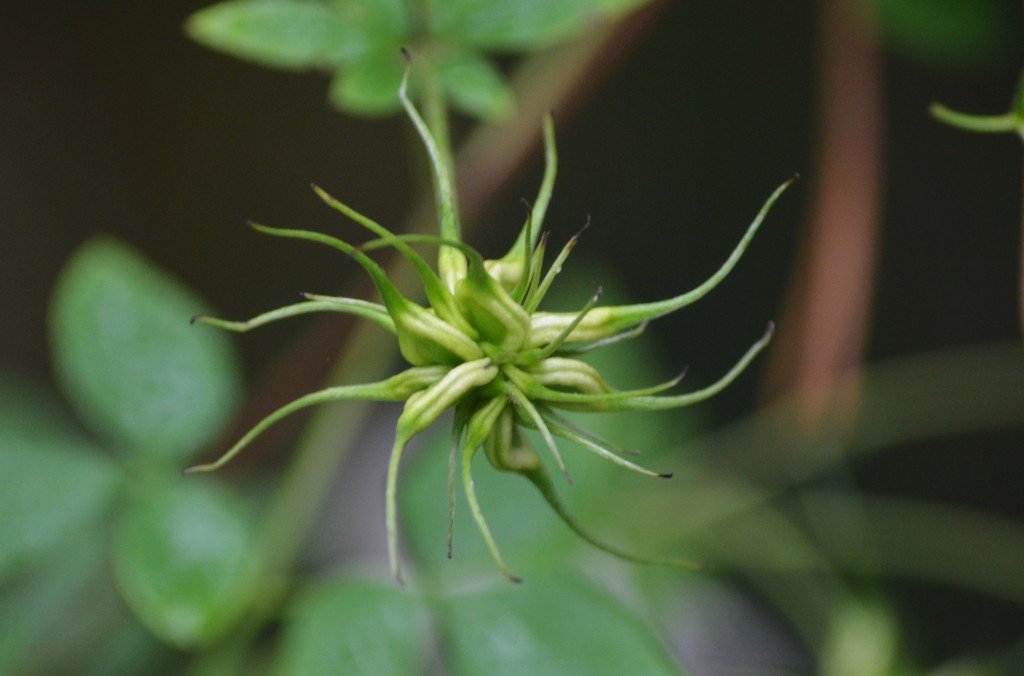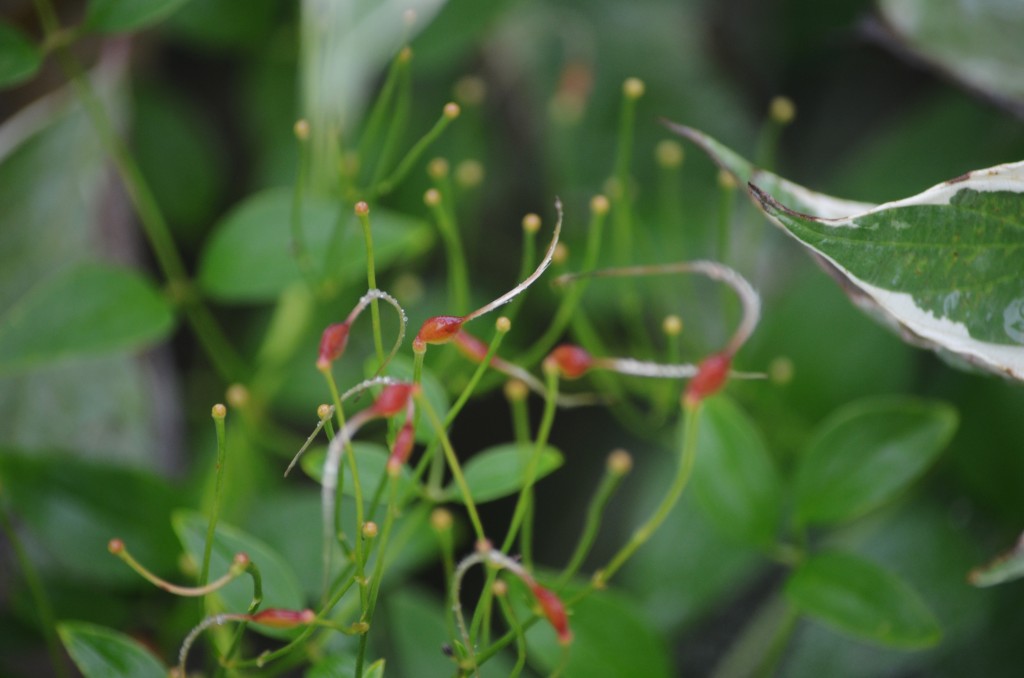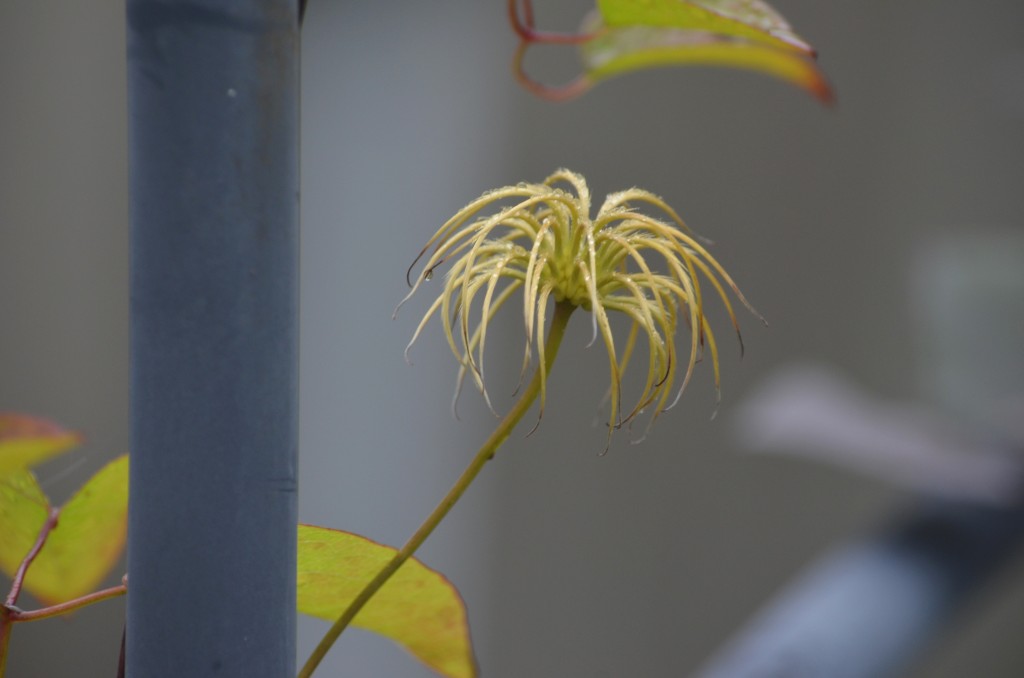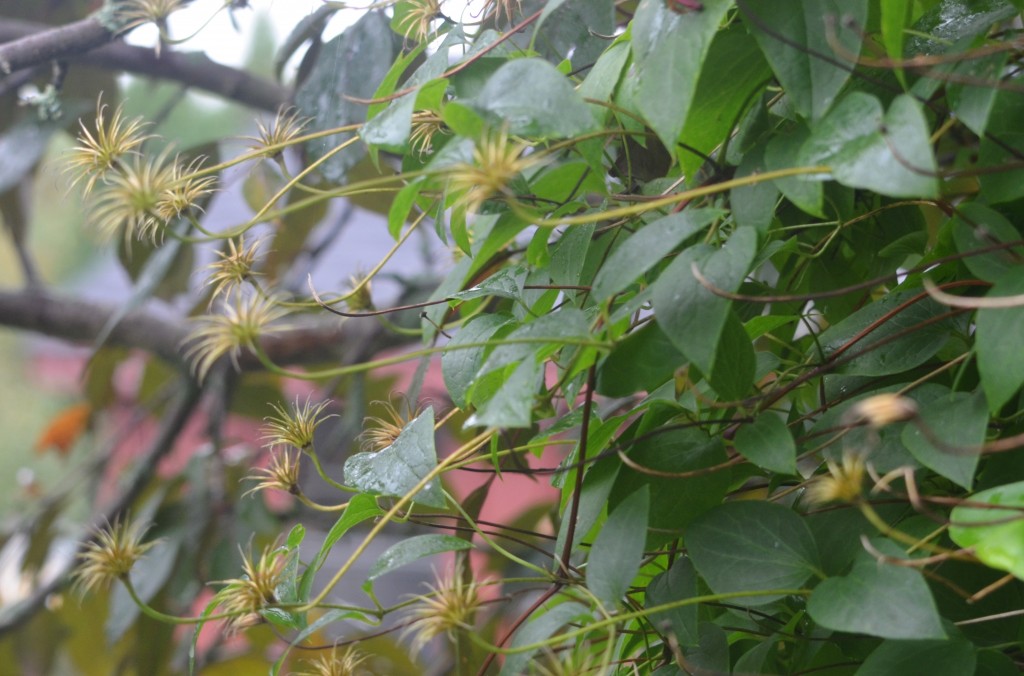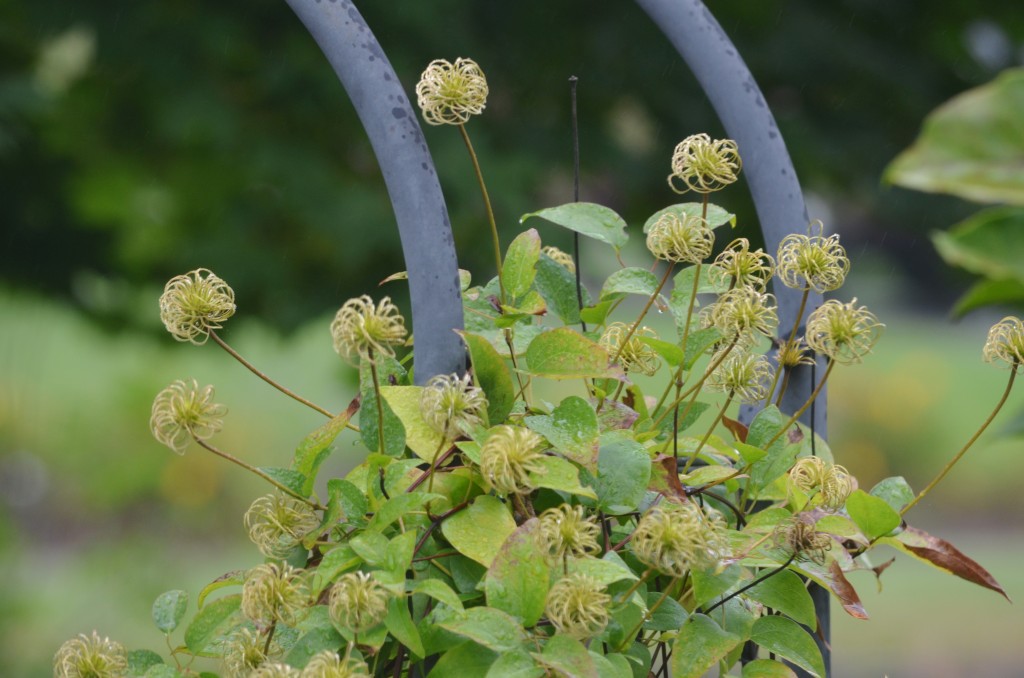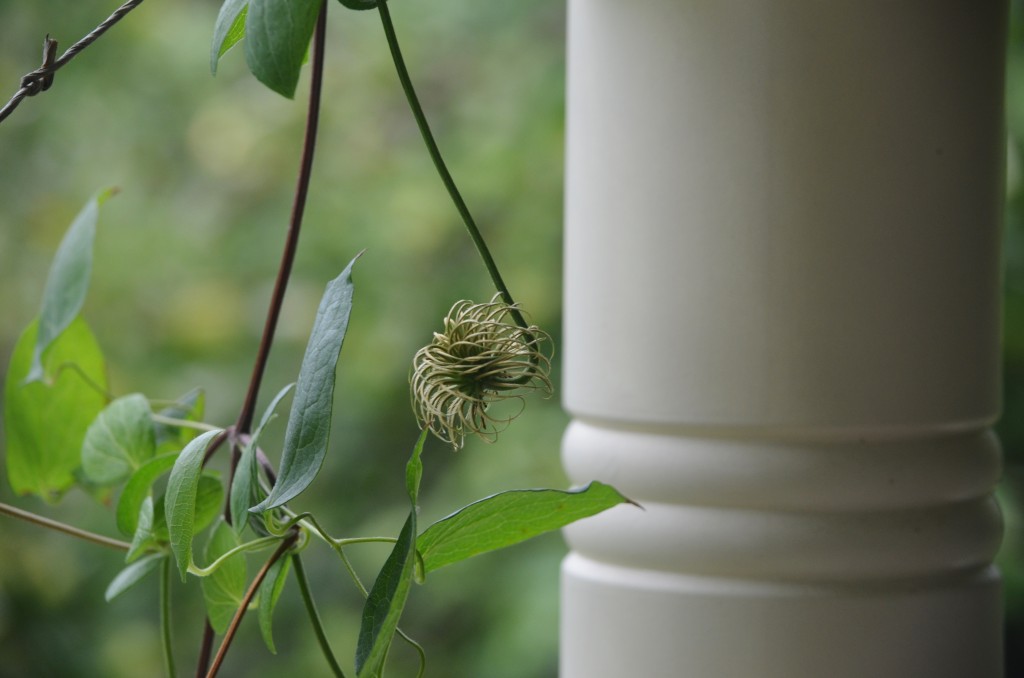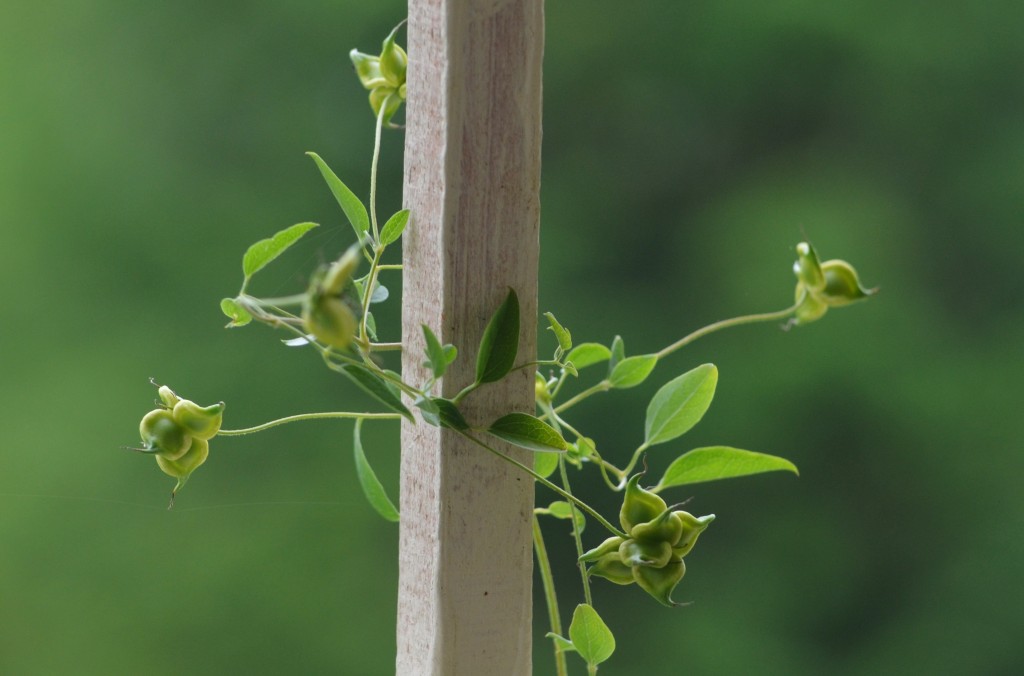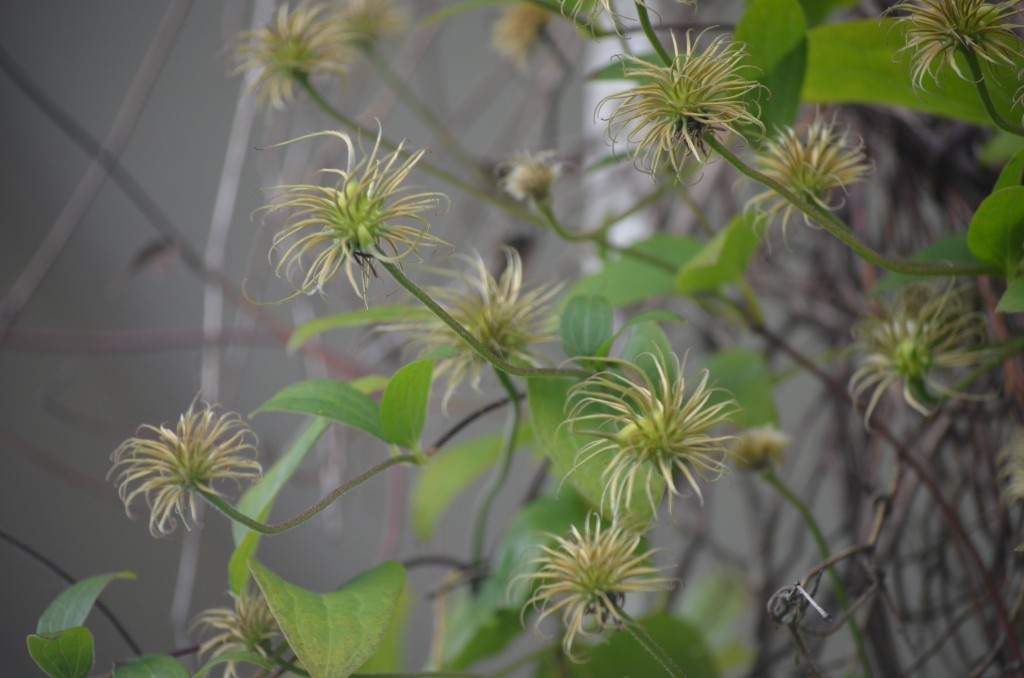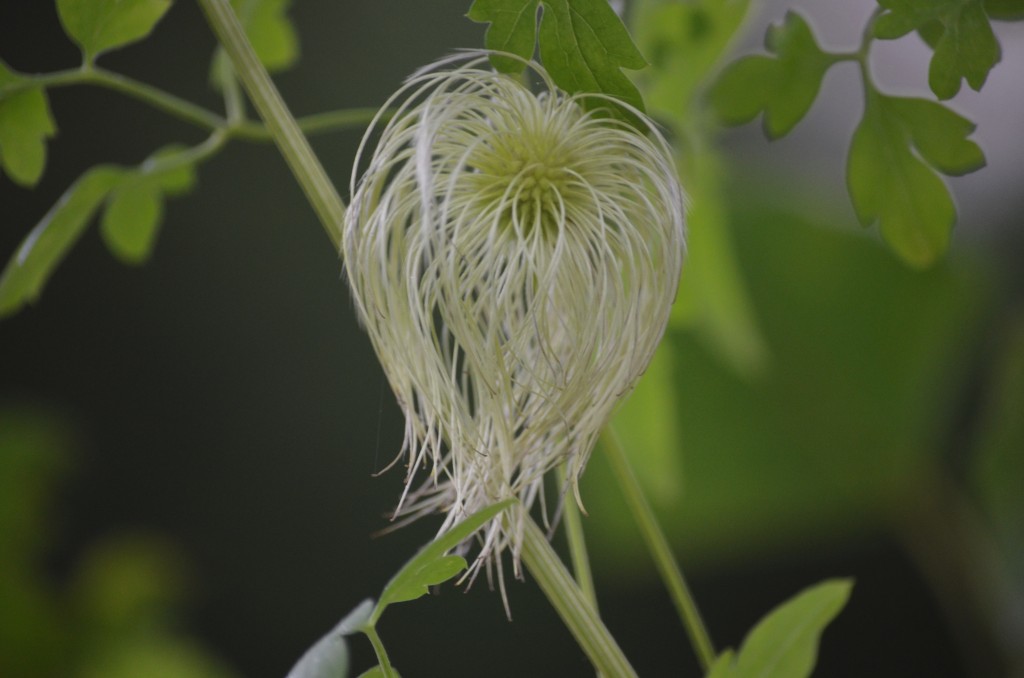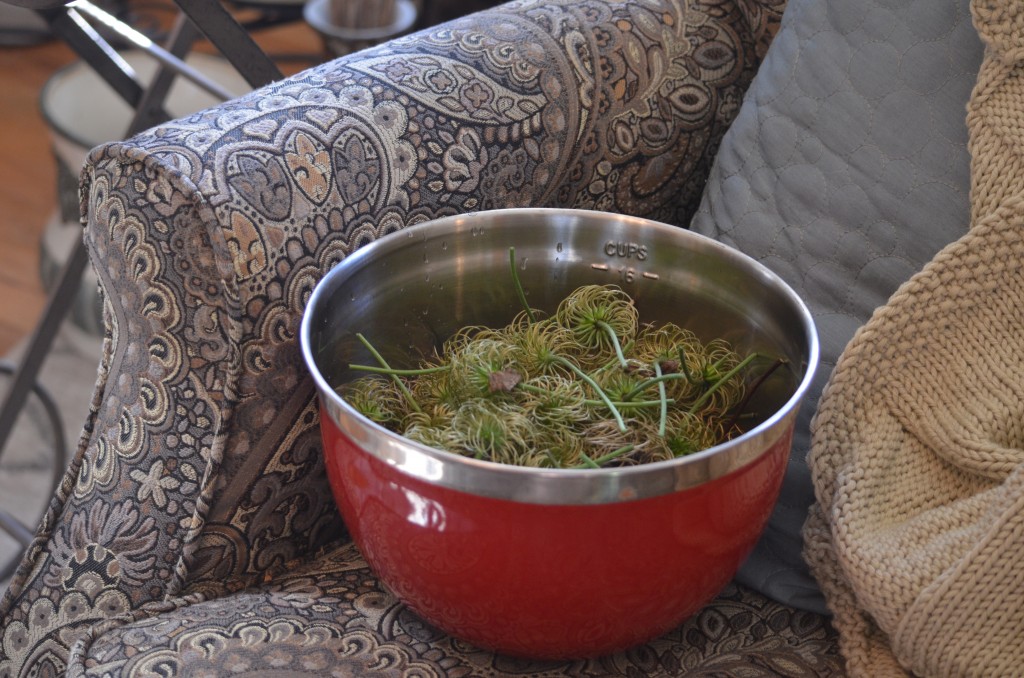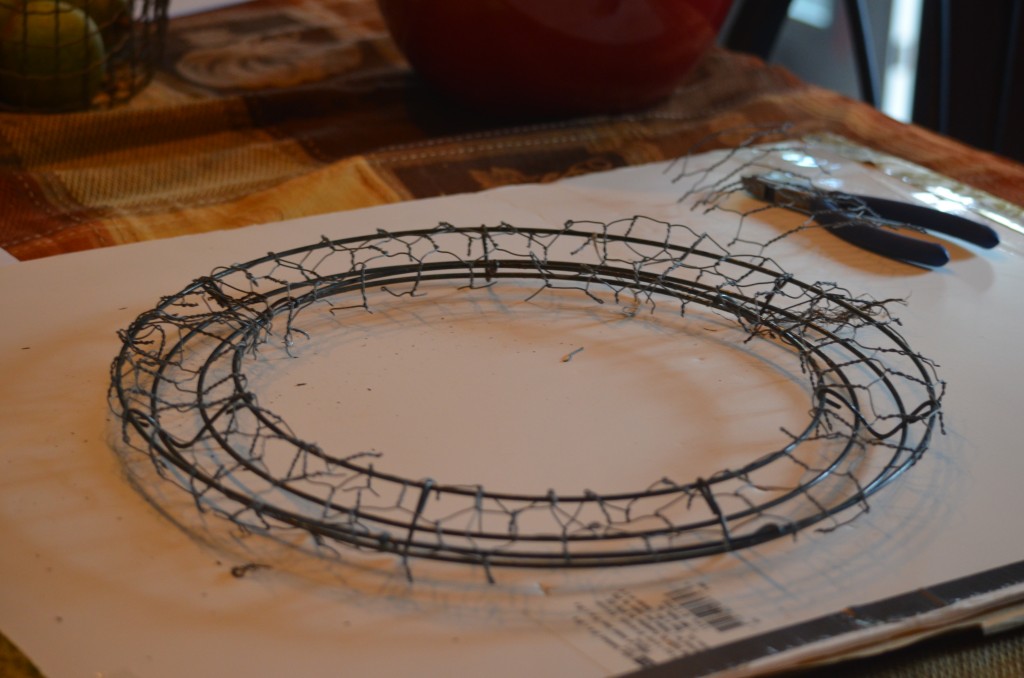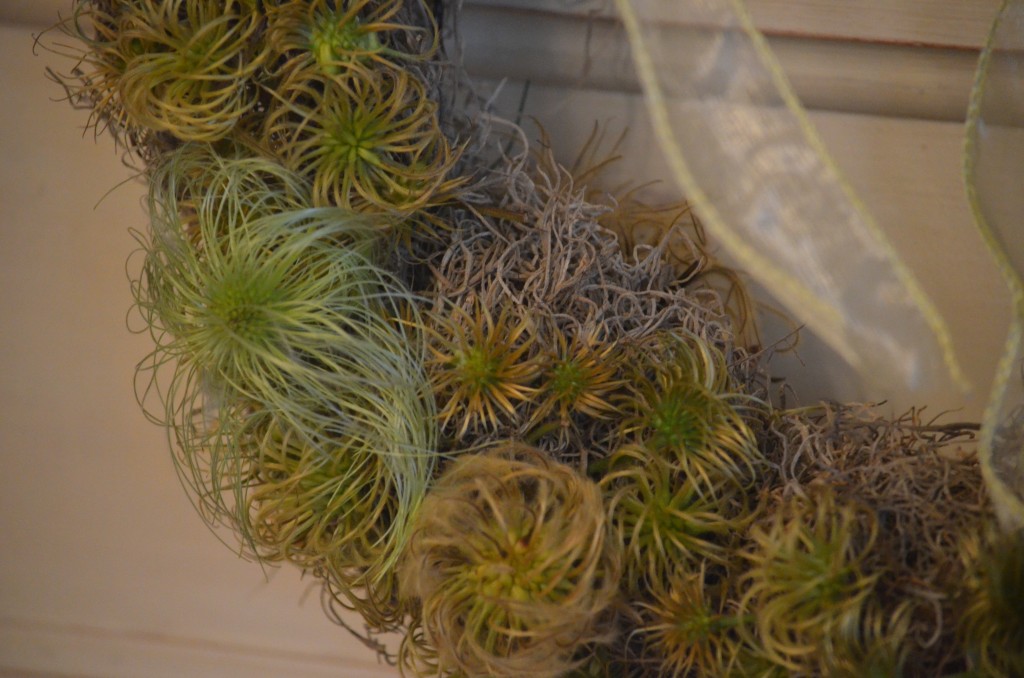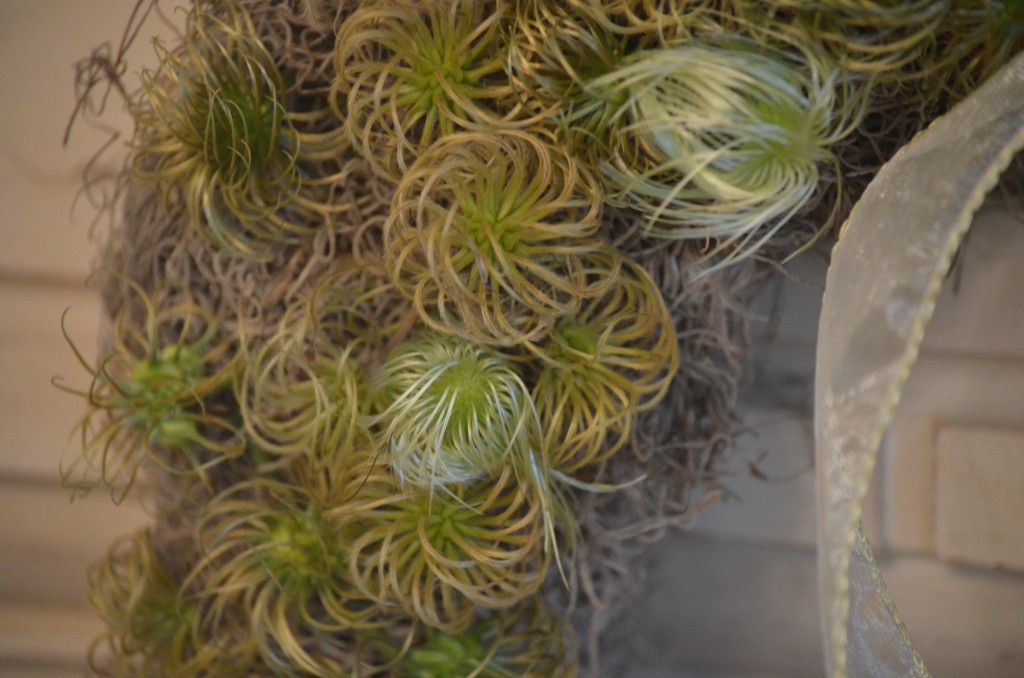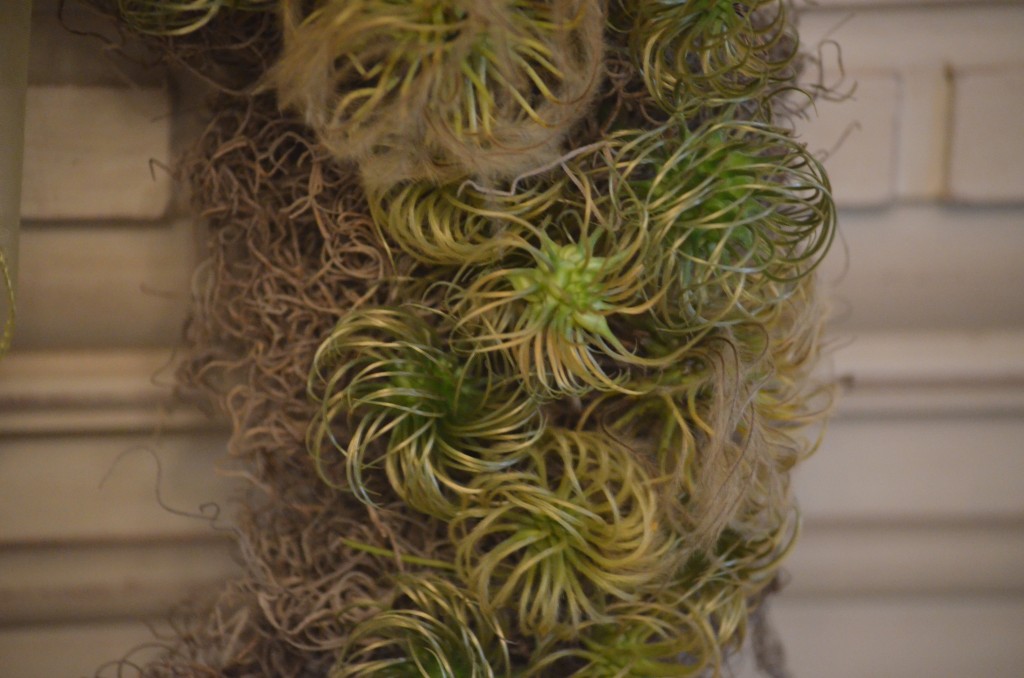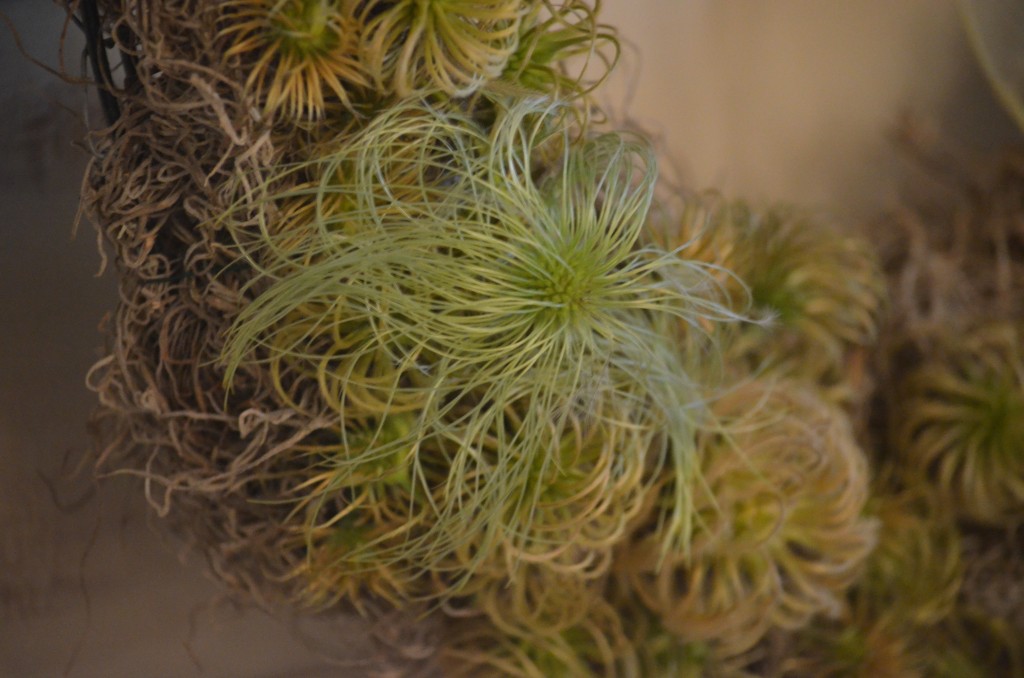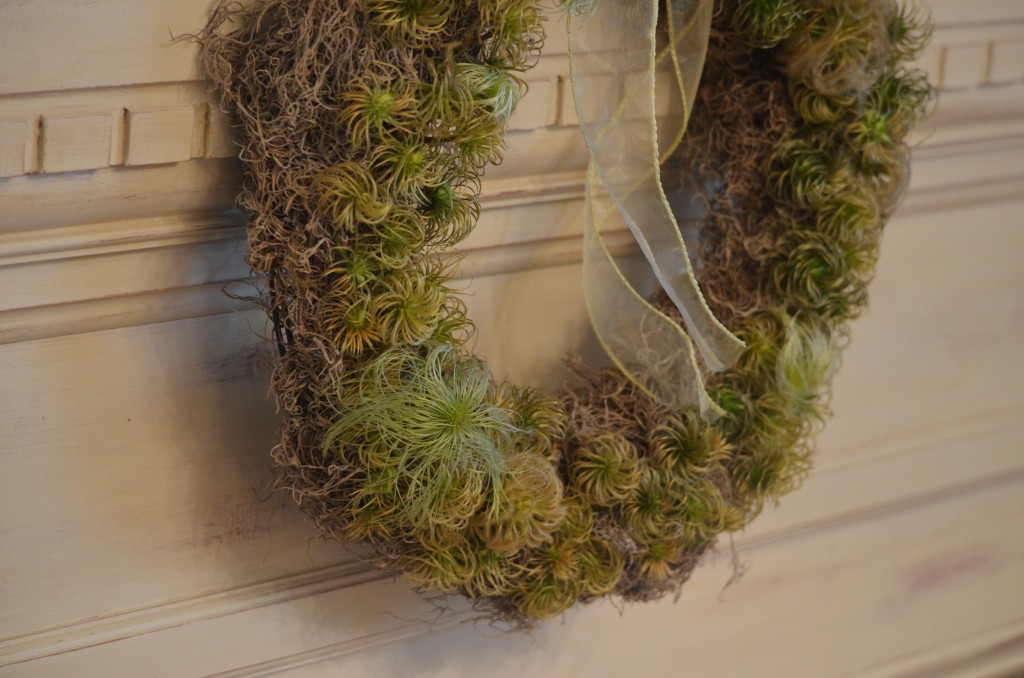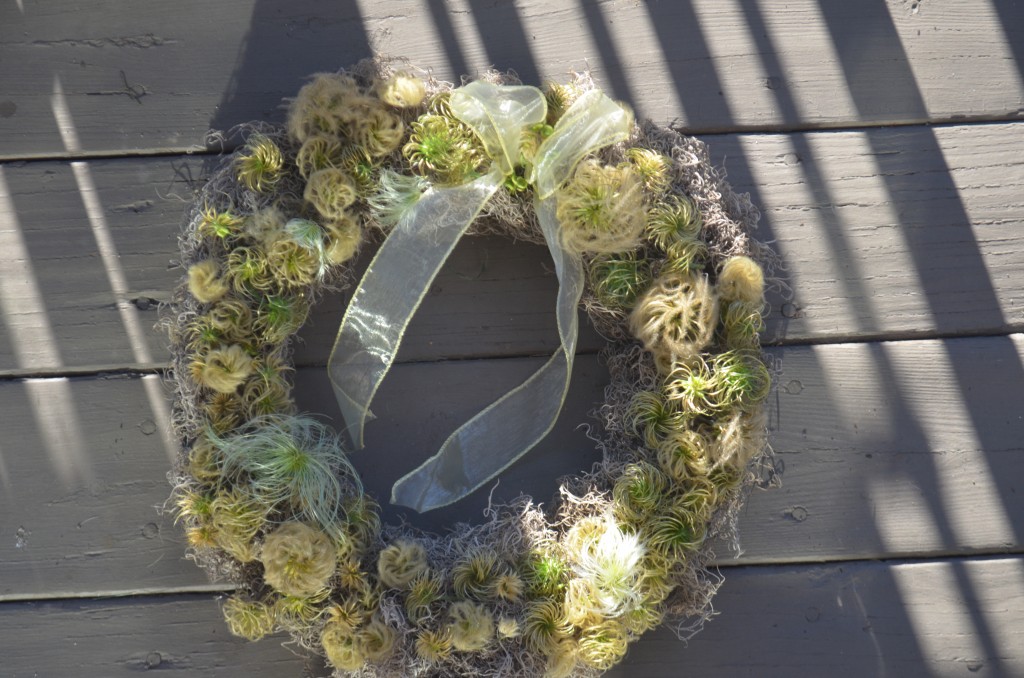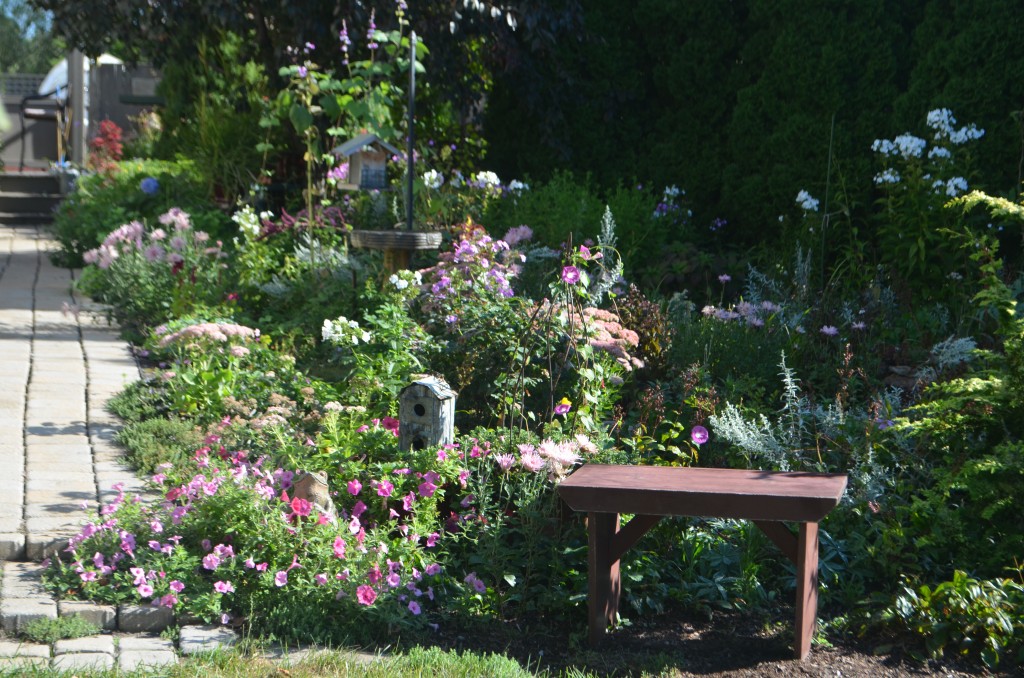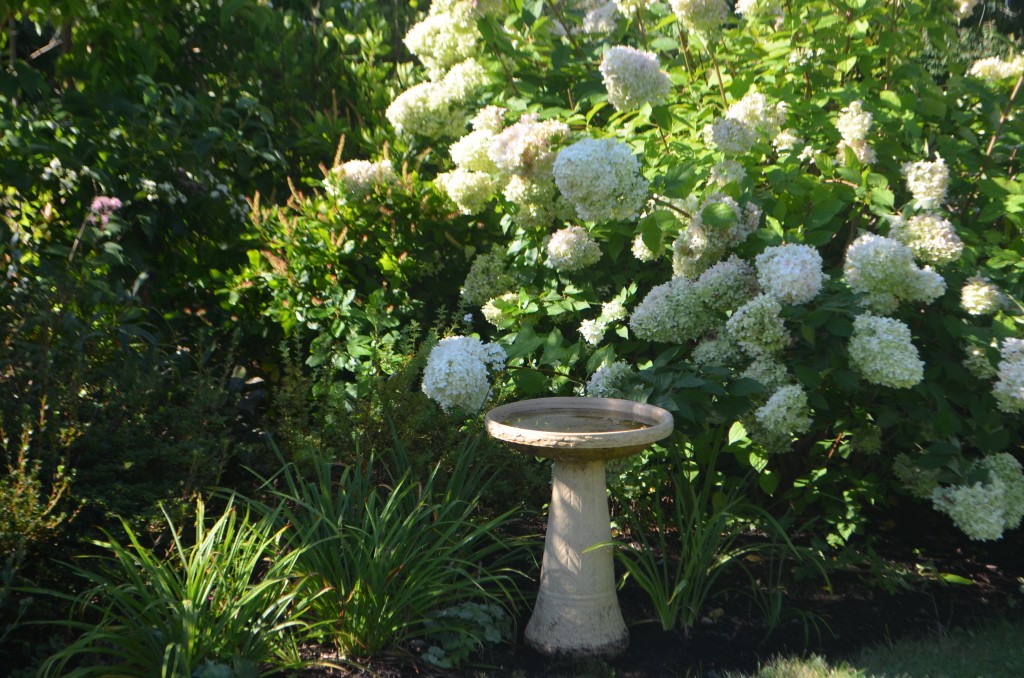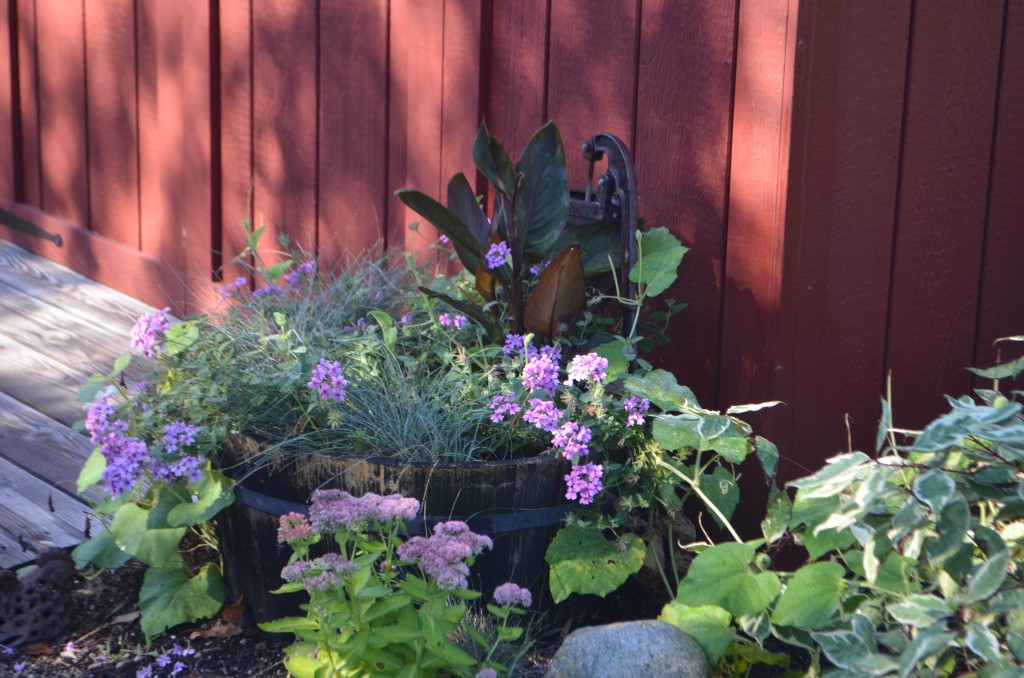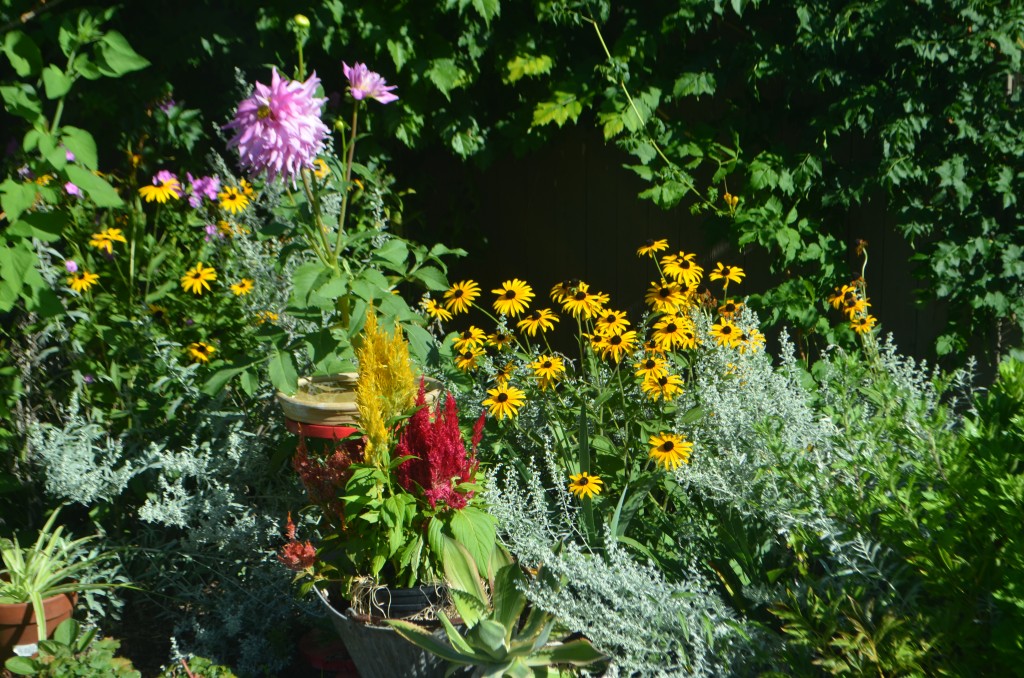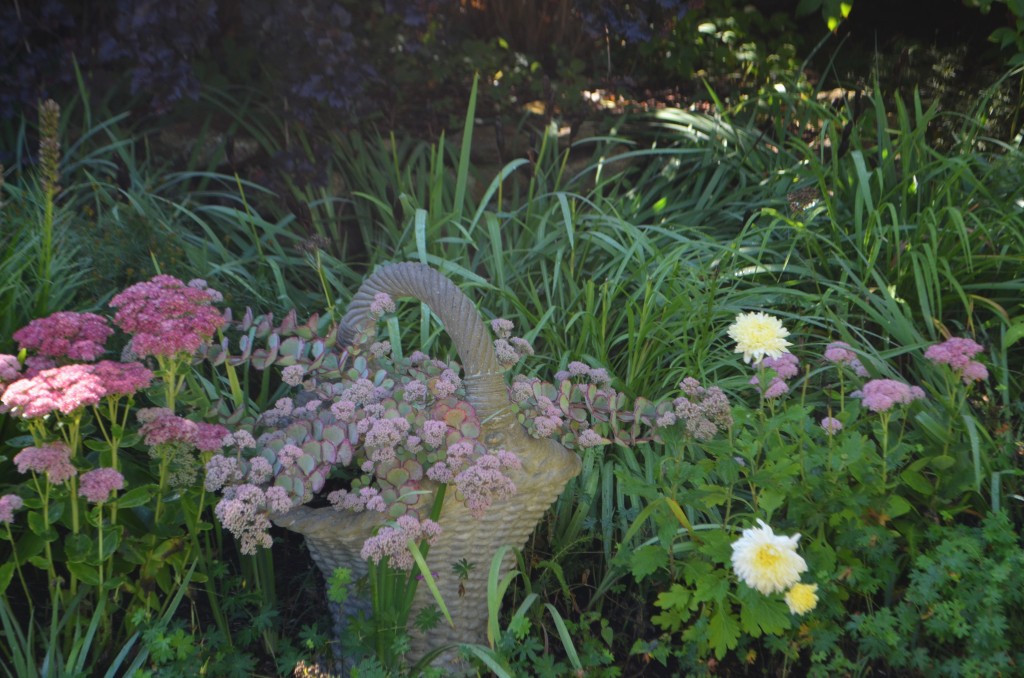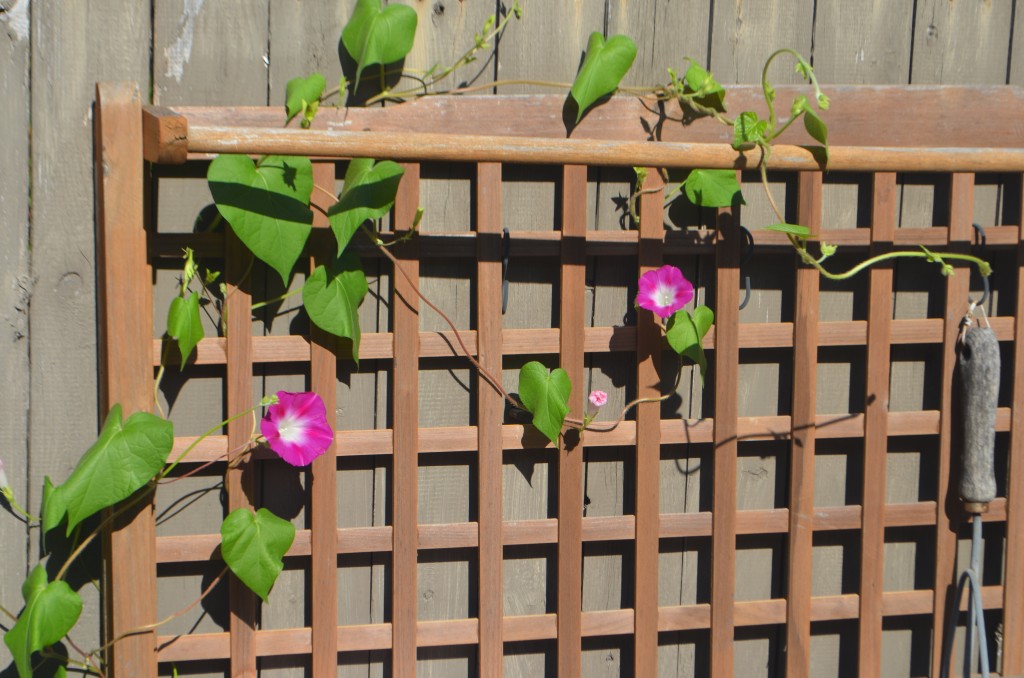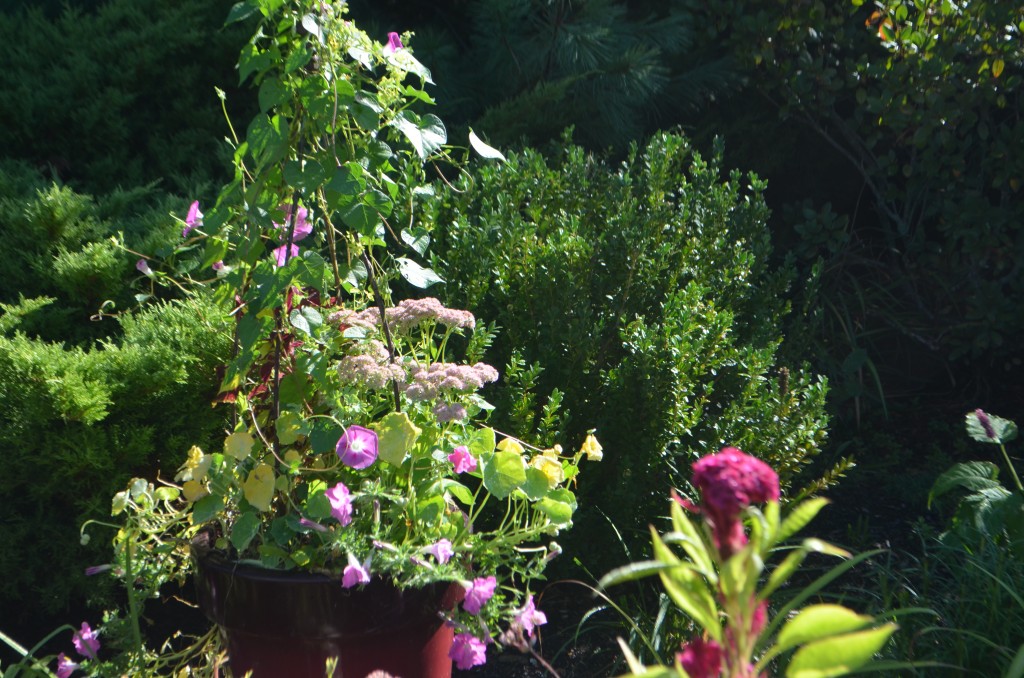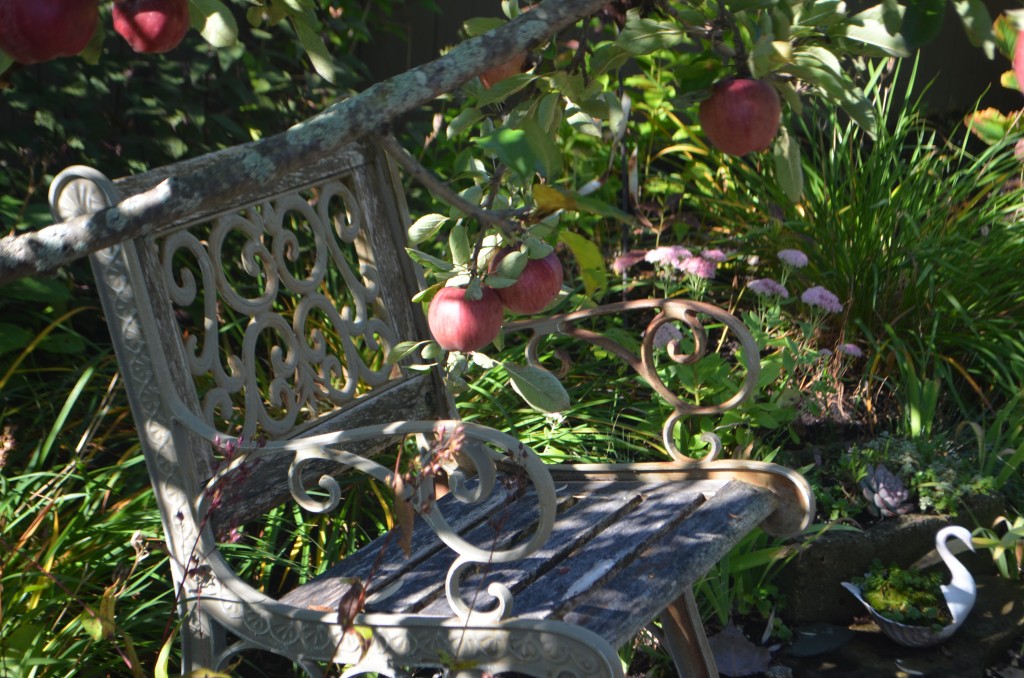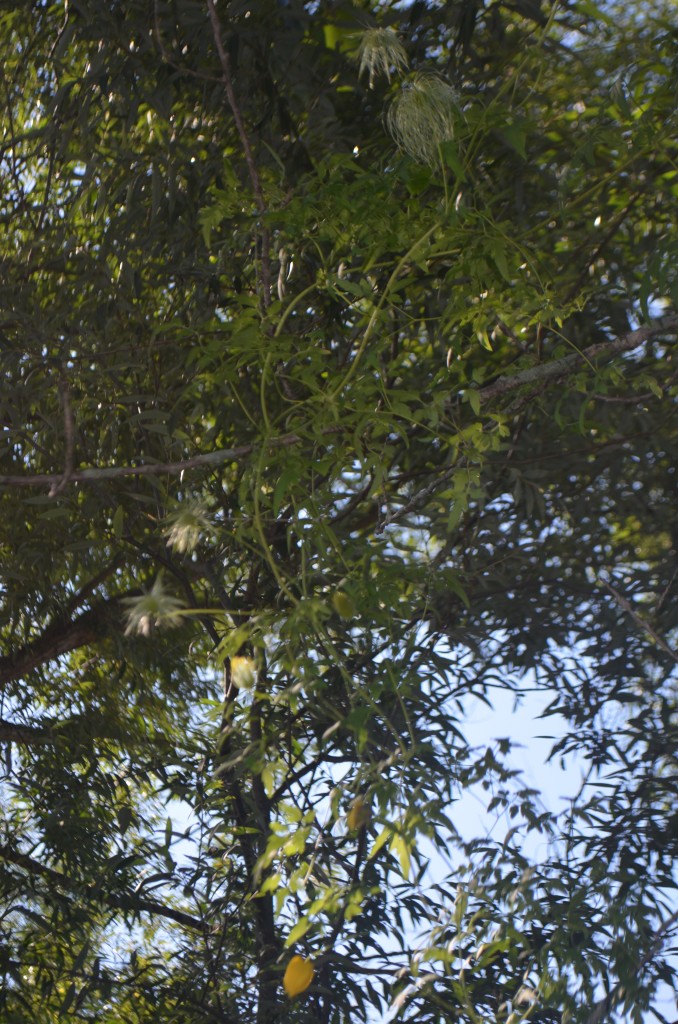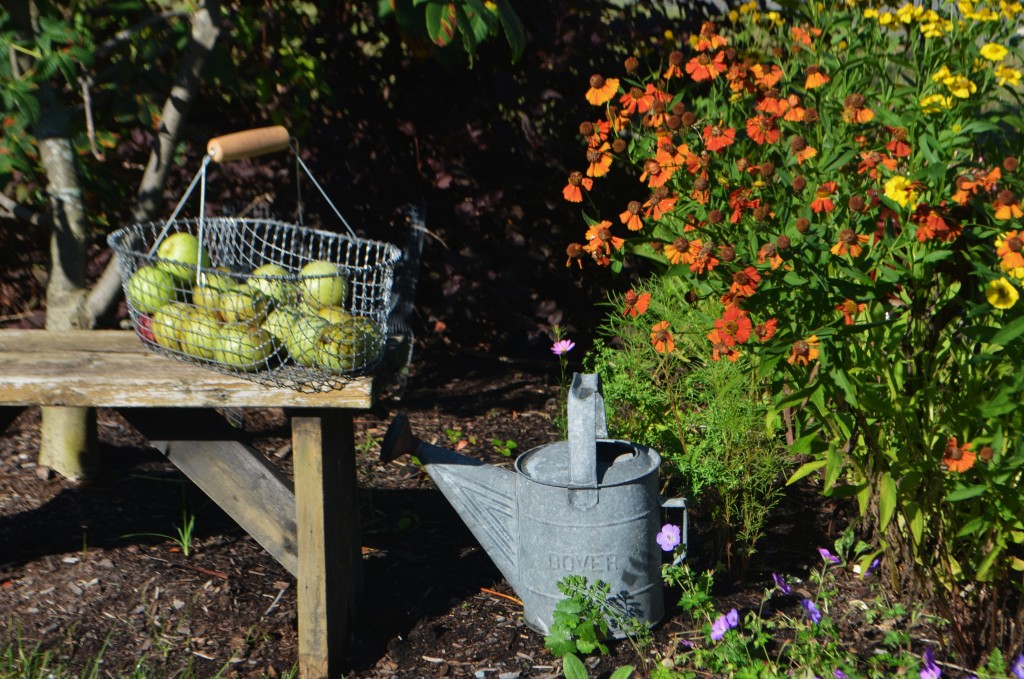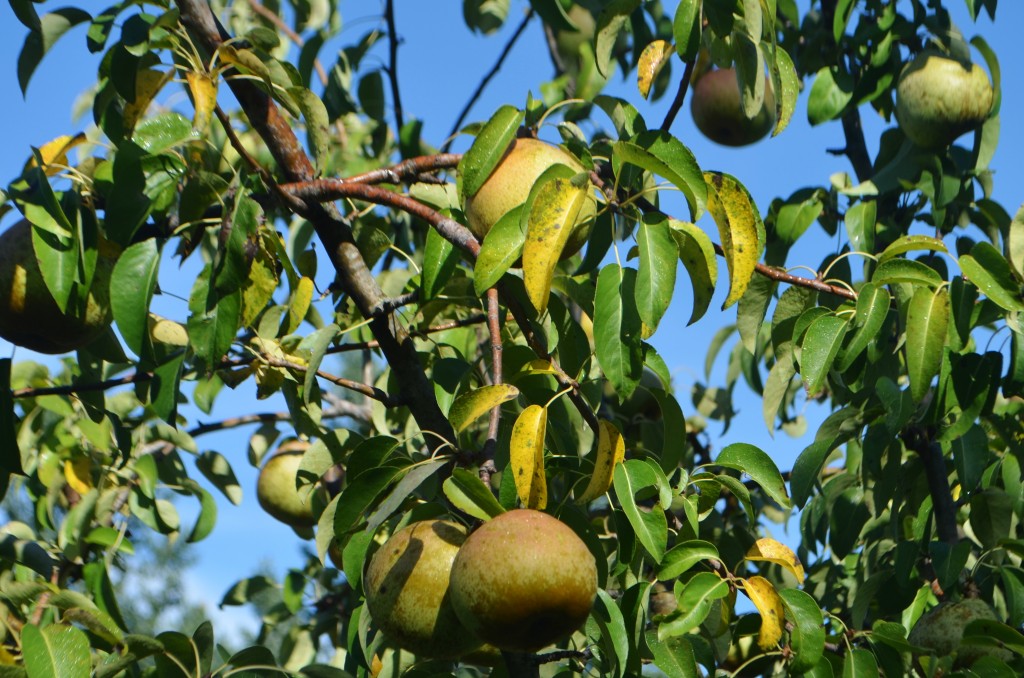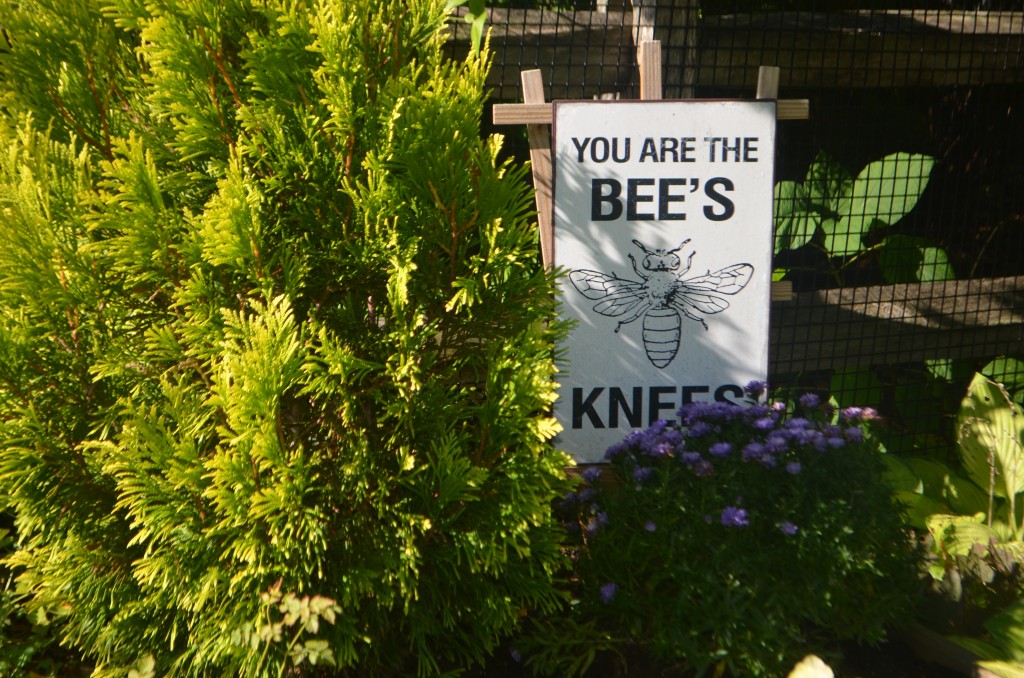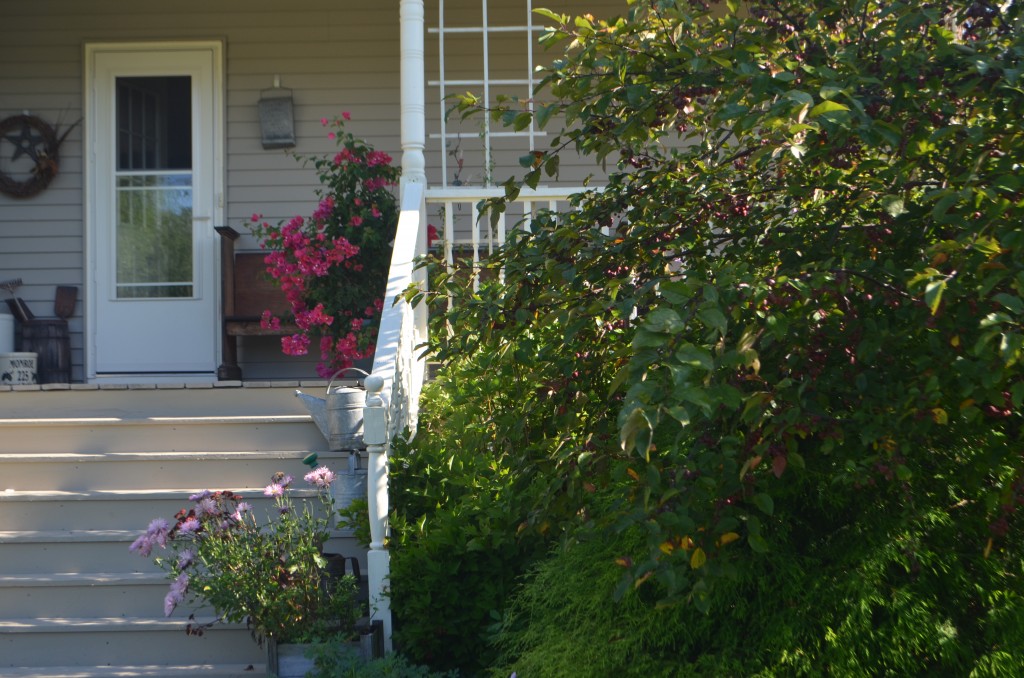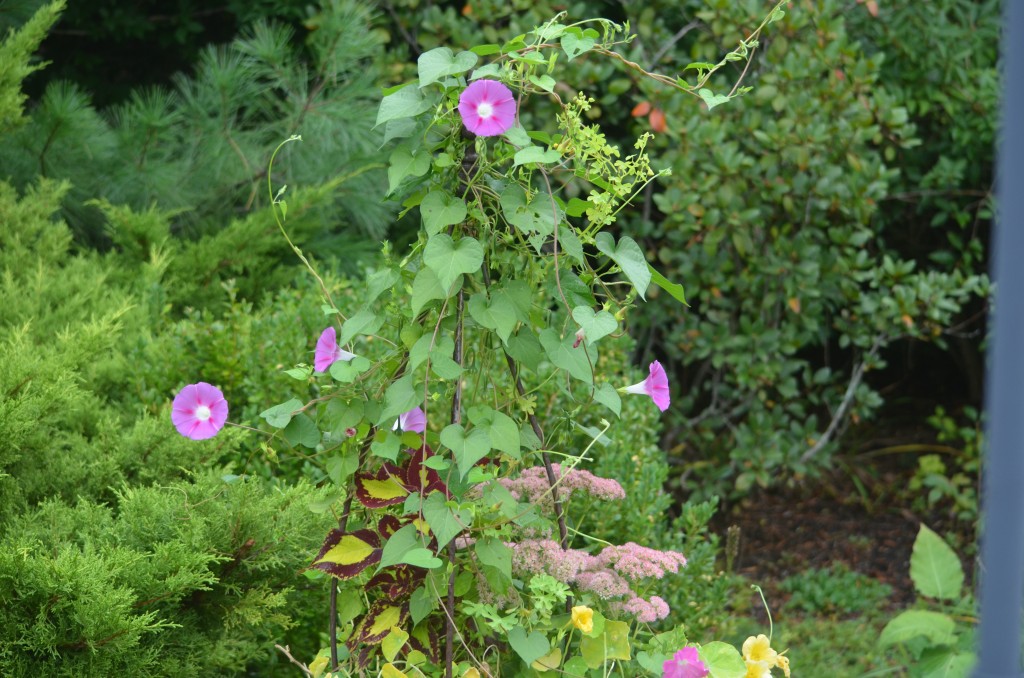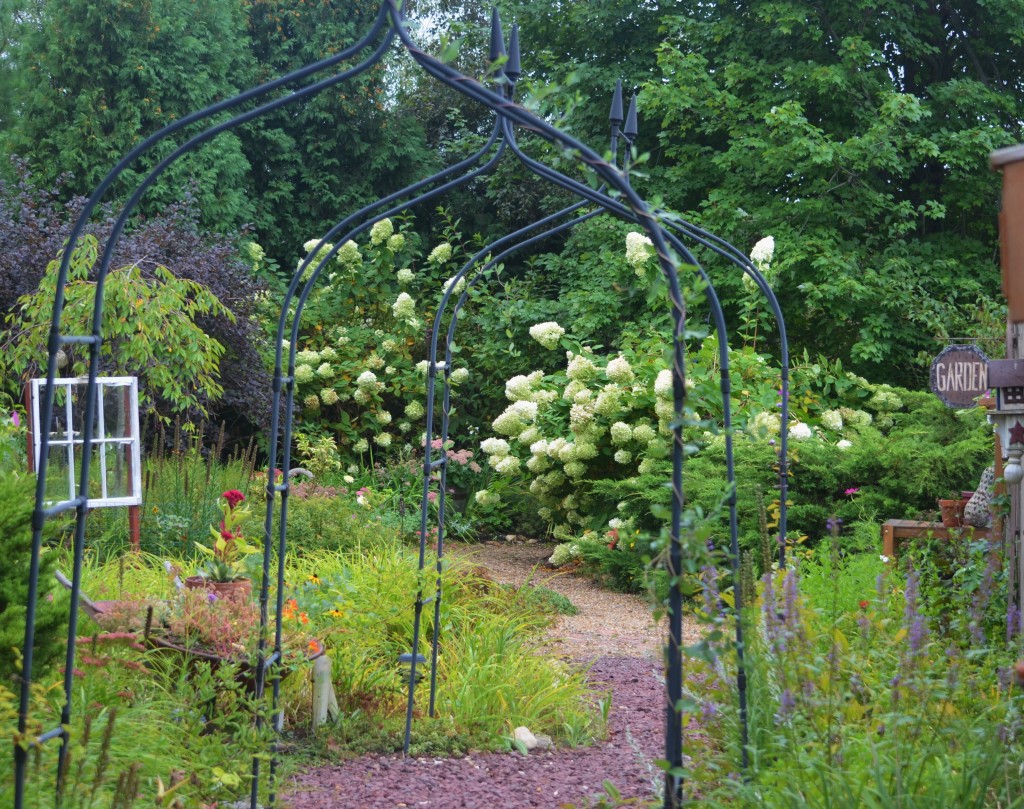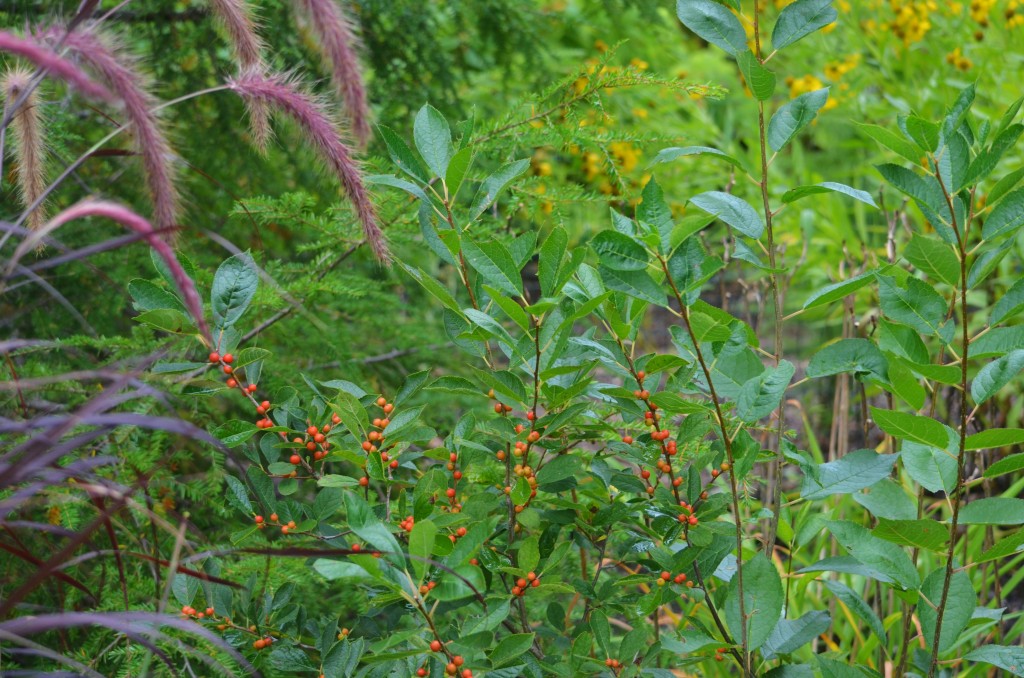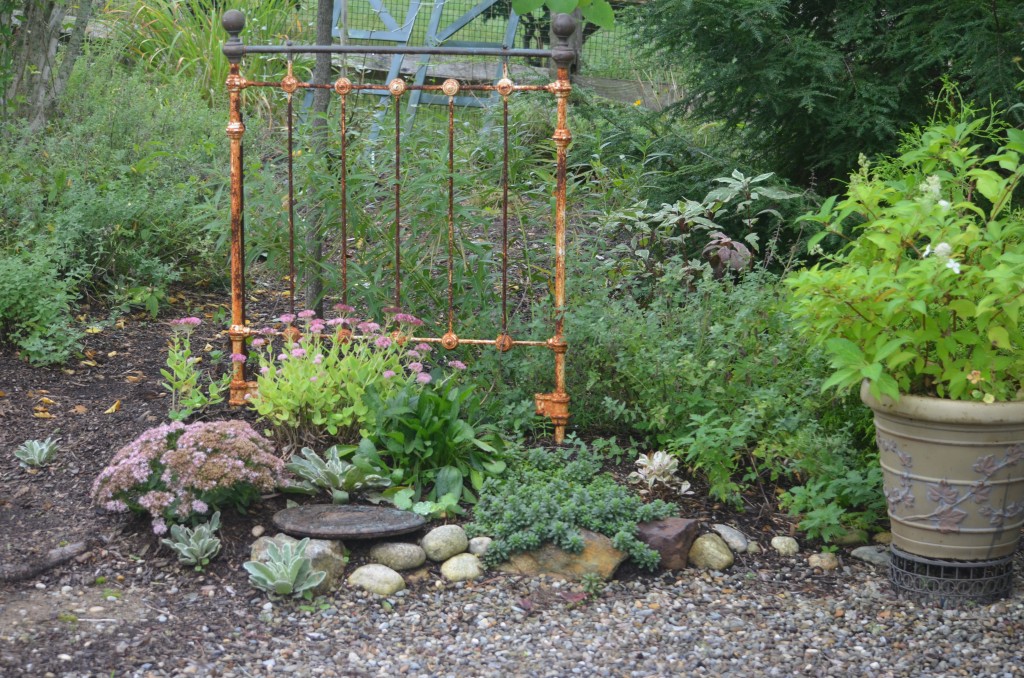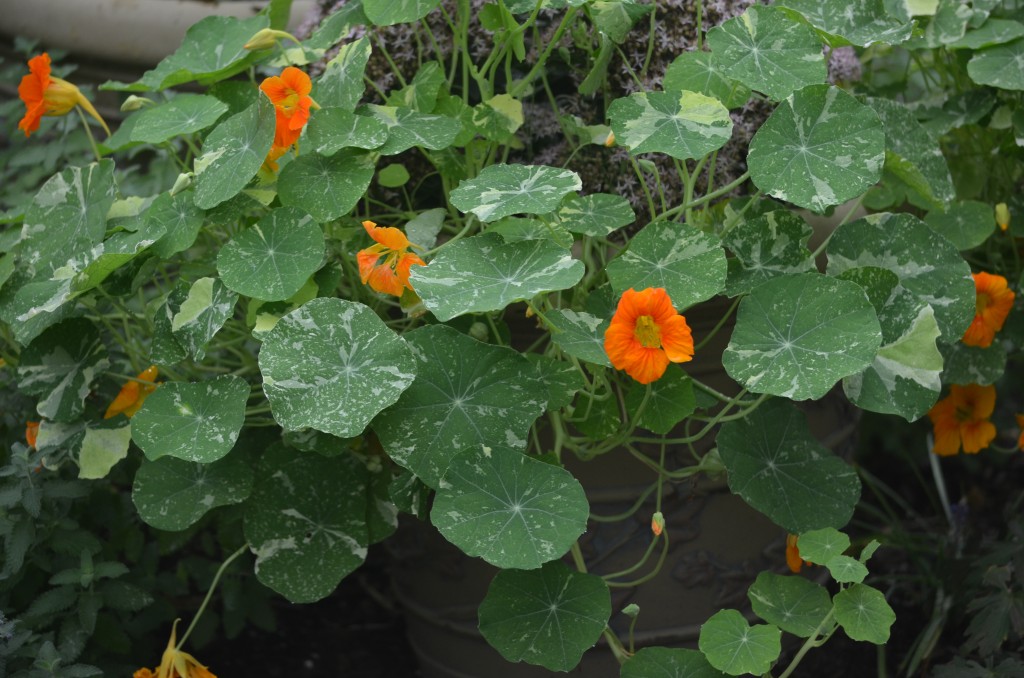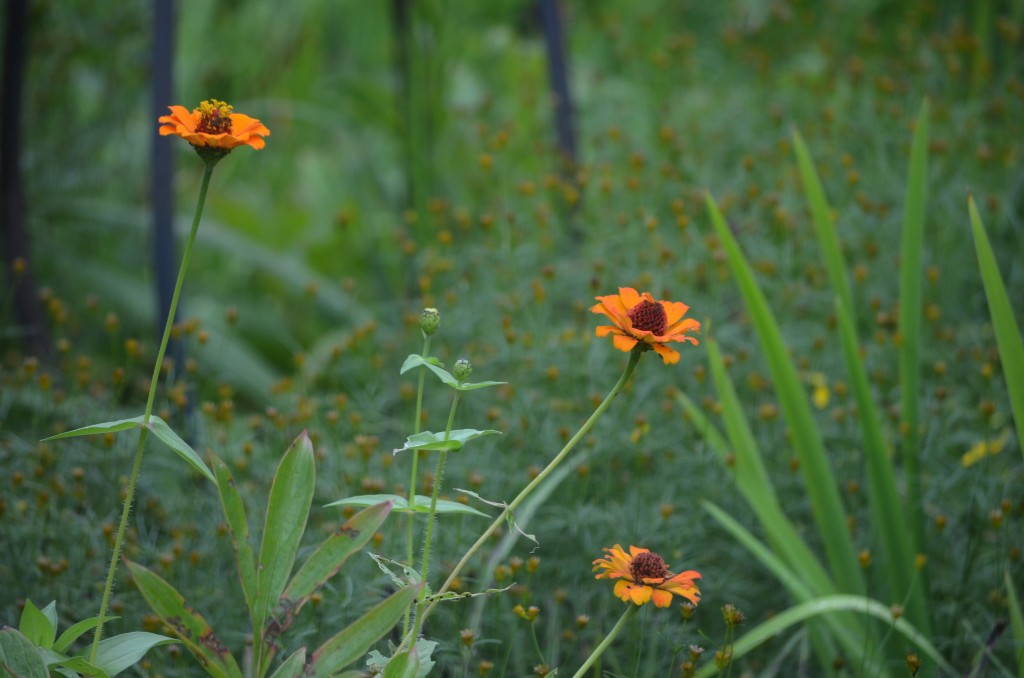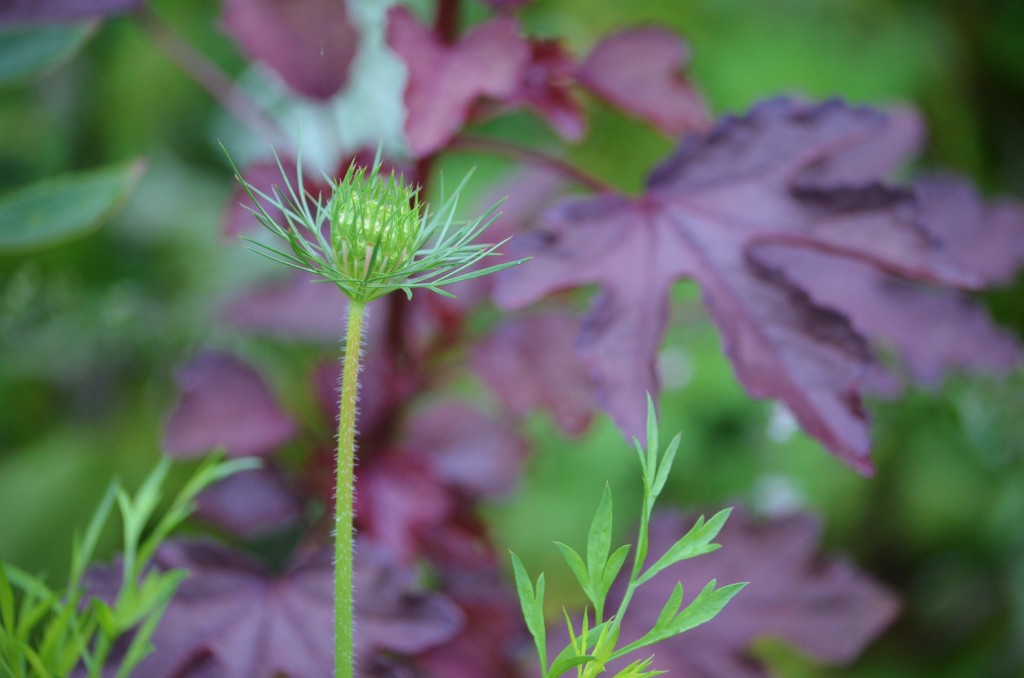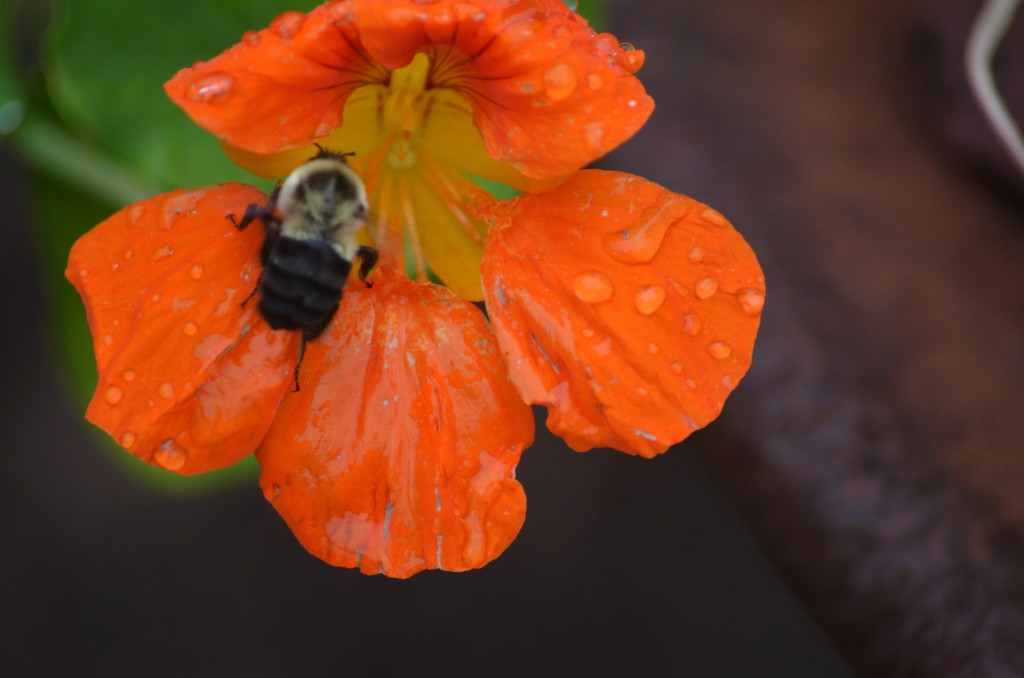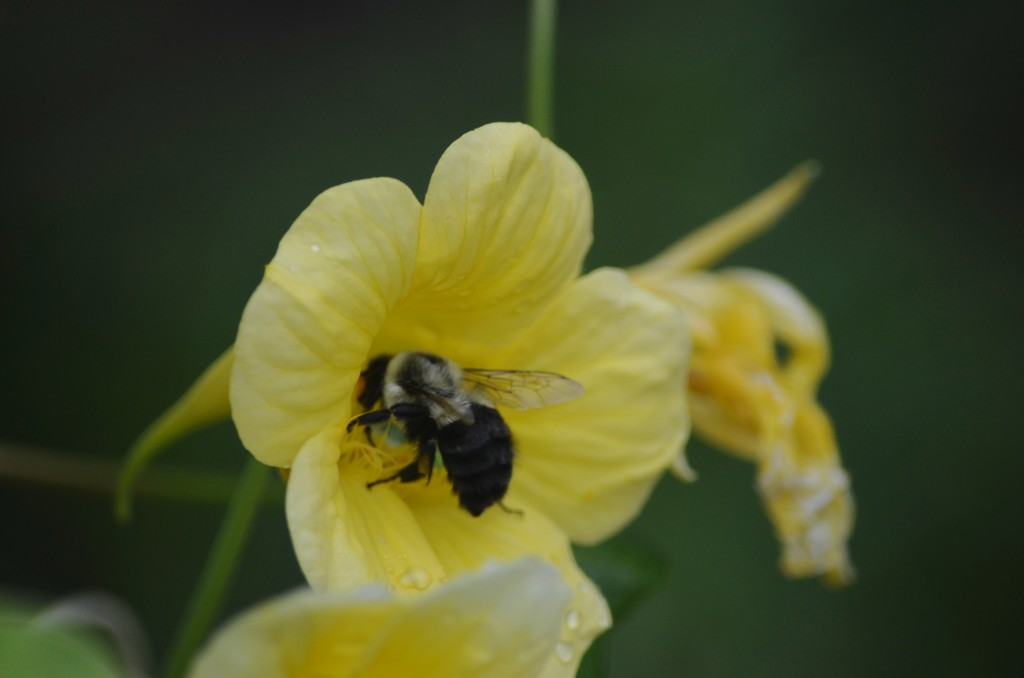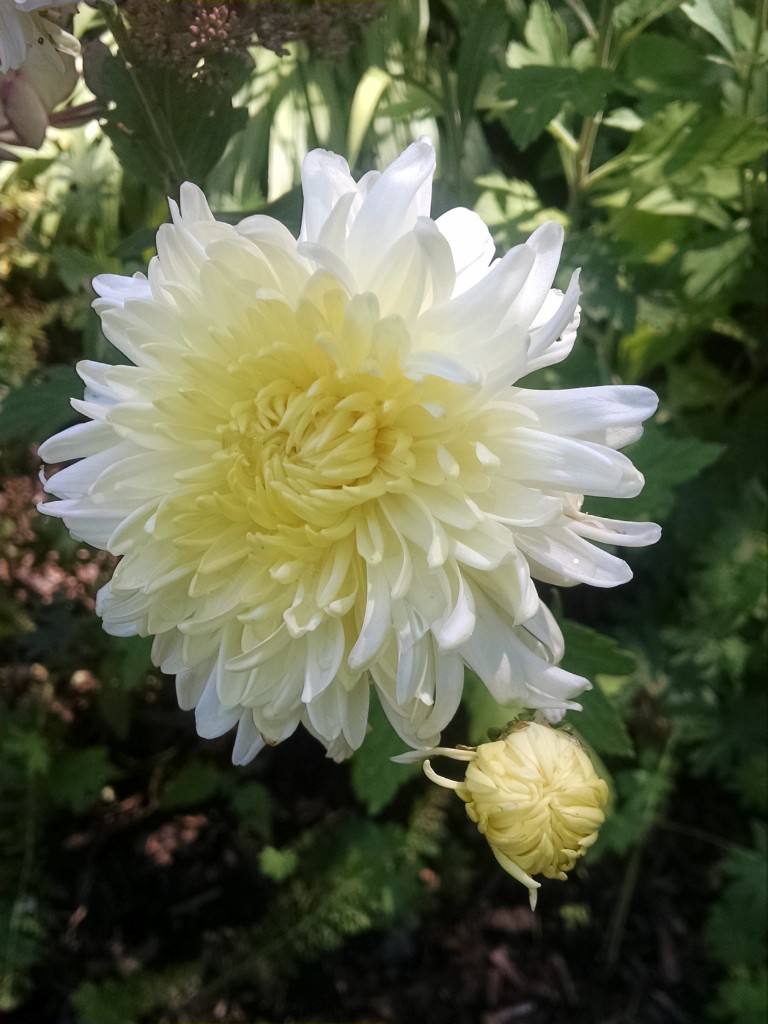this is probably the second busiest time of year for me in the garden. To keep it looking fresh requires lots of cutting back and dead heading, this year in particular has required triage watering on a daily basis as it has been so dry, and there is perennial dividing and planting, bulb planting, indoor bulb ordering and usualy a big project on the baord too. That leaves little time for other pursuits, but I have still been managing to throw together some arrangements form the garden and snap some quick photos .
here a simple pitcher with a few late upright sedums( I may have posted before?)
this next one is a favorite , it is one large hydrangea bloom ( faded), persian shield stobilanthes dyerianus, verbena bonairiensis , and a twig of snowberry symphoricarpos . Simple and just my style. Both the Persian shield and hydrangea will last a very long time in a vase, the Persian shield often grows roots and can be potted up to overwinter indoors. The snowberry is a crap shoot, sometimes they last forever , sometimes they brown up quick. I always pick off any that are showing signs of rotting to prevent it spreading and this twig has held up already well over week in water.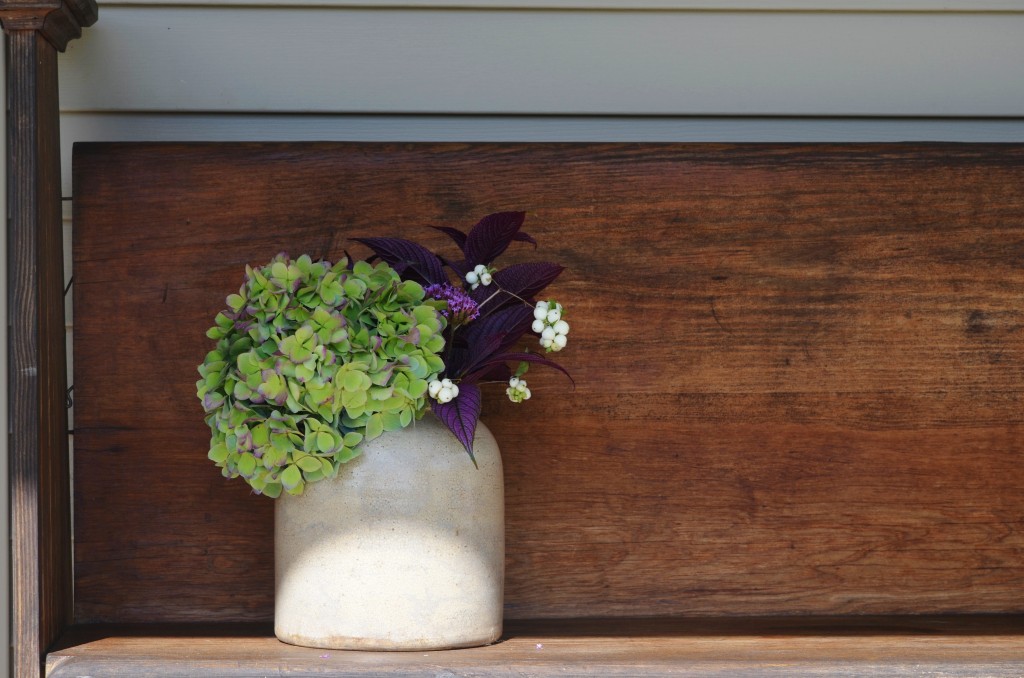
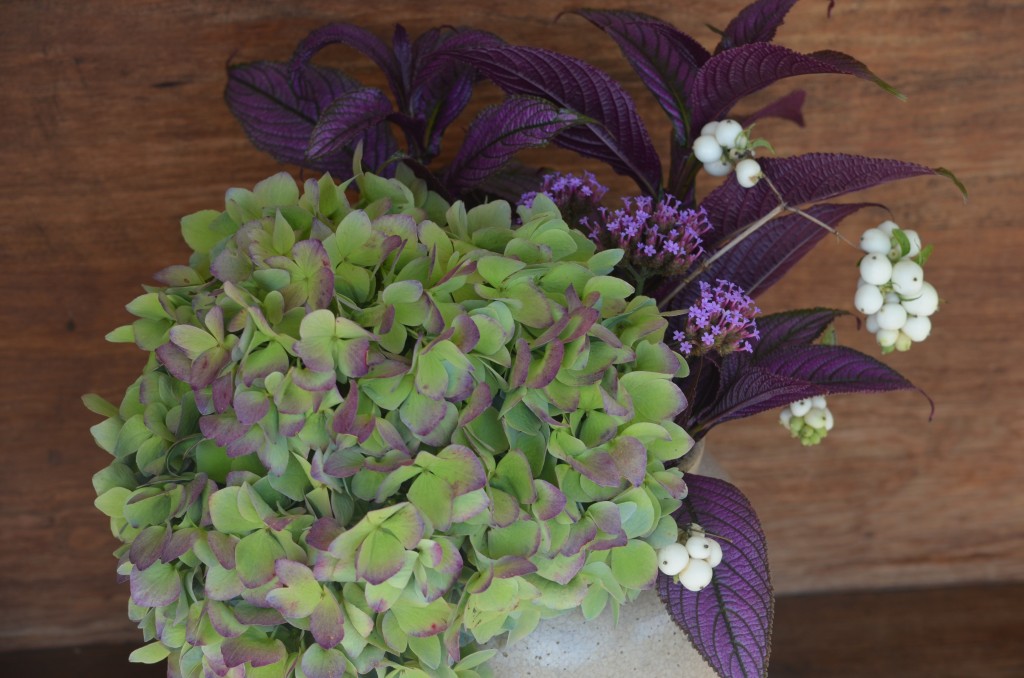
The last one is a red /dark pink color study. I was so excited to do a red filled vase and was going to make it a loose blousy affair with lots of stems of daucus carrota which is a carrot relative I FINALLY got seed for , but when I went out to pick them the GD rabbits had eaten the plant to the ground. I sulked for the rest of the day, but put together this little vase anyway to cheer me up. It has a coleus, a very large dahlia, purple fountain grass, a single zinnia, the burnished leaves of a mountain hydrangea, celosia, sedum ,and the foliage of Red Shield Hibiscus, another newbie to me for cutting. 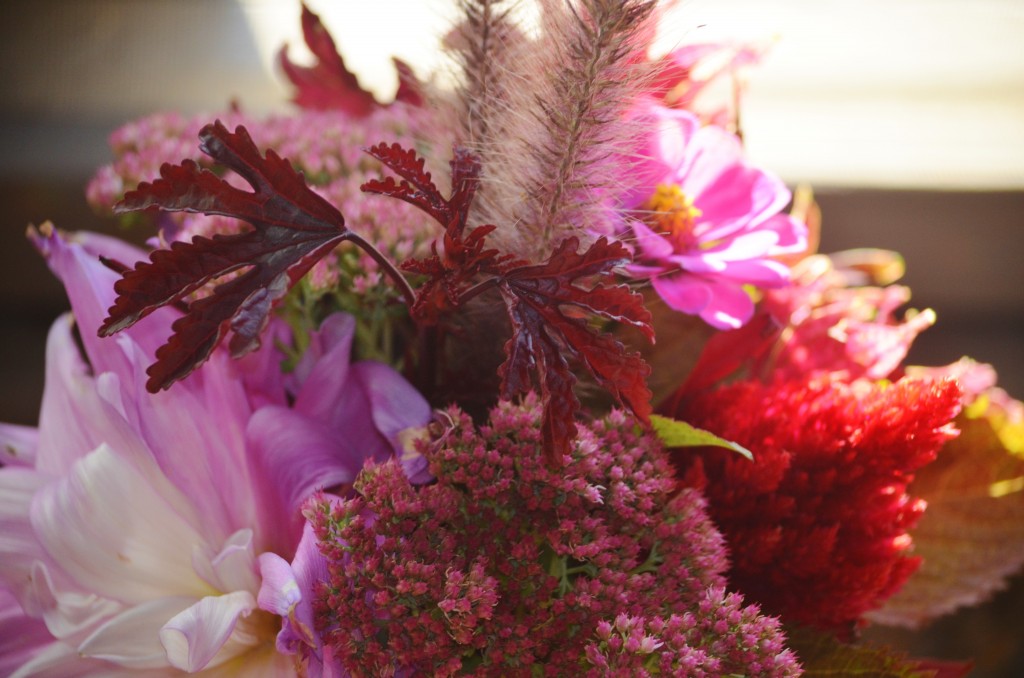 The hibiscus was slow to get going, and now has enough foliage that I don’t mind cutting, what I did notice though was that the older and bigger leaves wilt promptly when cut ,and so far despite all my tricks I have yet to figure out how to re-hydrate them. the smaller leaves are just fine .It is a cool plant I may grow again.
The hibiscus was slow to get going, and now has enough foliage that I don’t mind cutting, what I did notice though was that the older and bigger leaves wilt promptly when cut ,and so far despite all my tricks I have yet to figure out how to re-hydrate them. the smaller leaves are just fine .It is a cool plant I may grow again.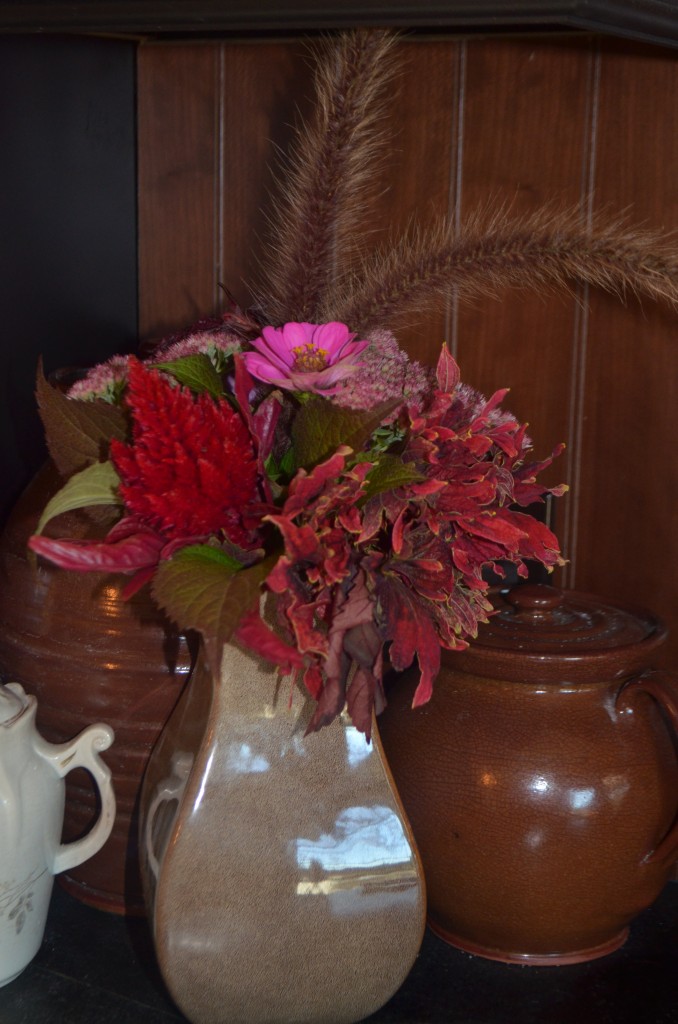
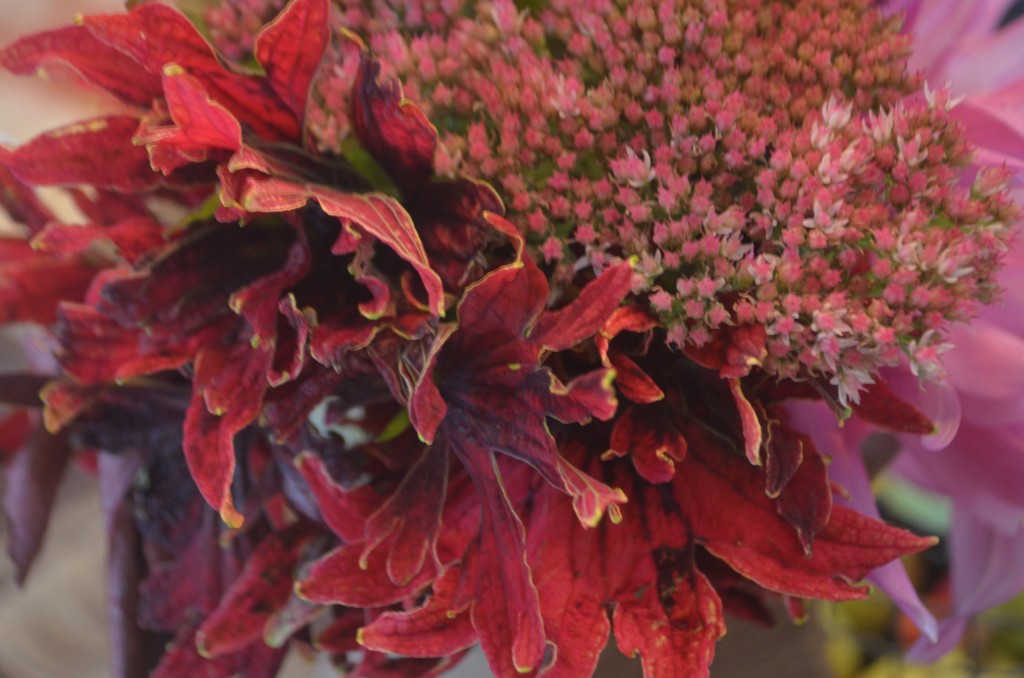
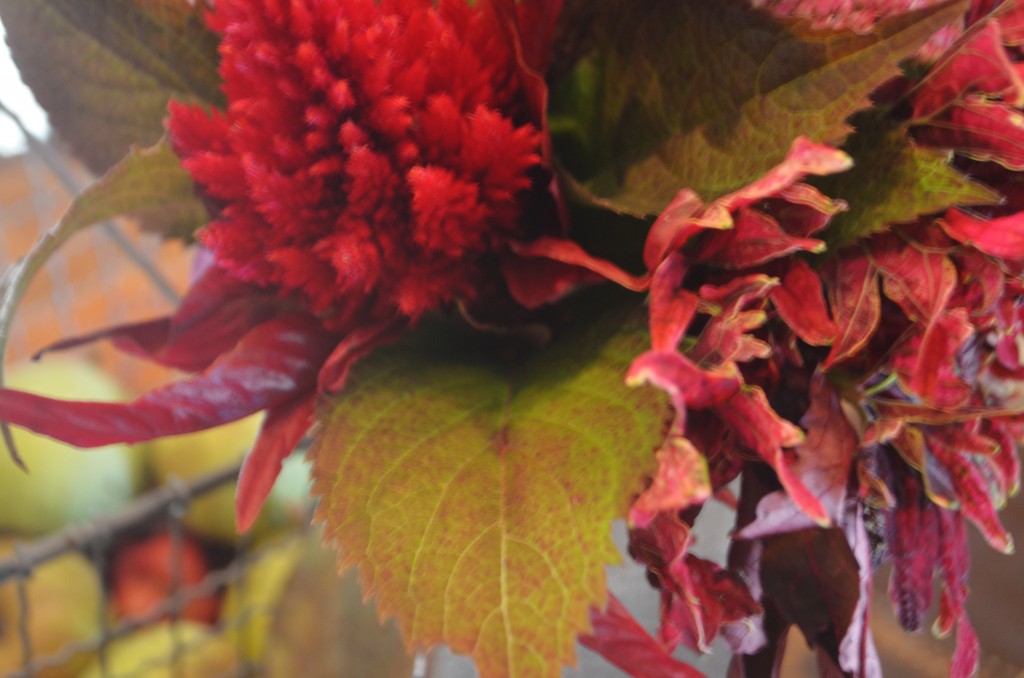
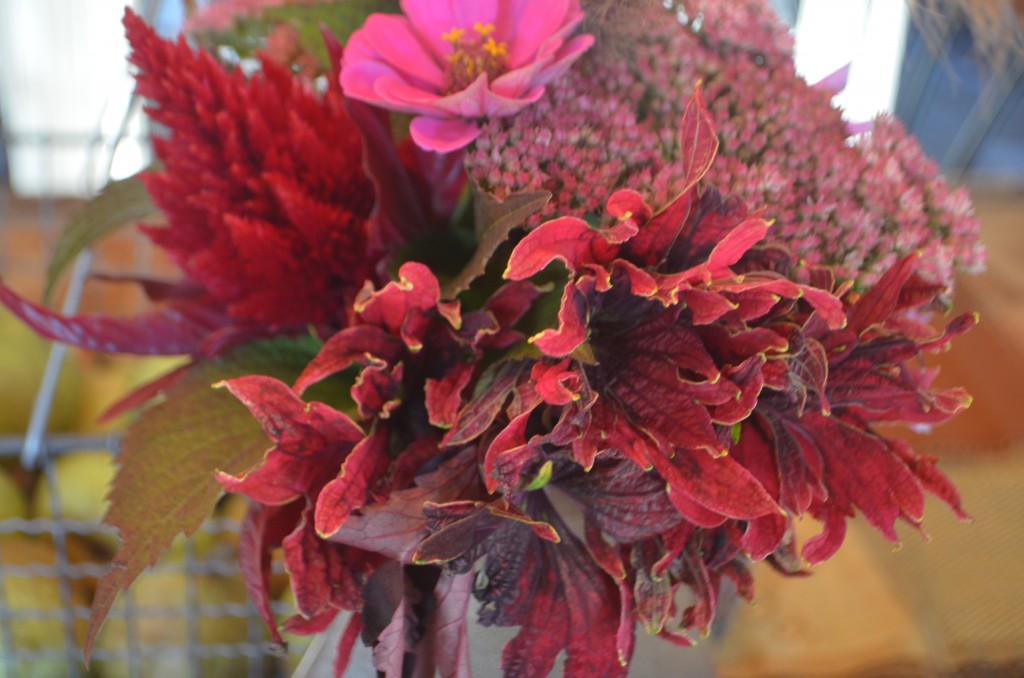
As to the reddish carrot flowers I adore, luckily I had sown seed in a container of other annuals and I have some about to bloom there. The container got lifted up onto a pedestal and out of reach of the mangy marauders for further insurance. As soon as I see flowers I will try again.
